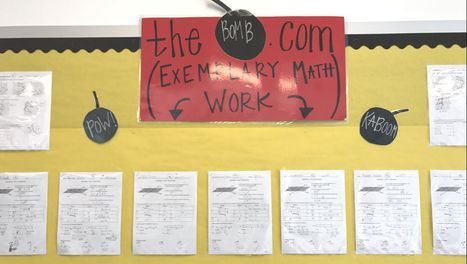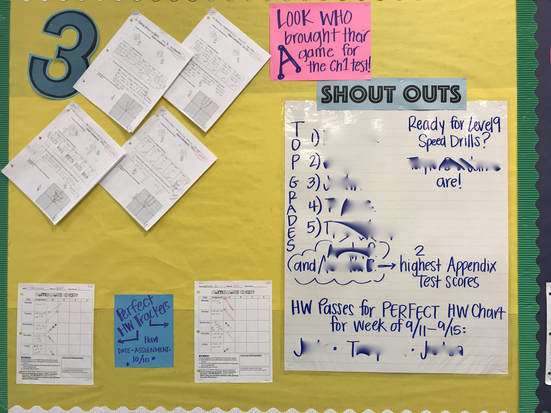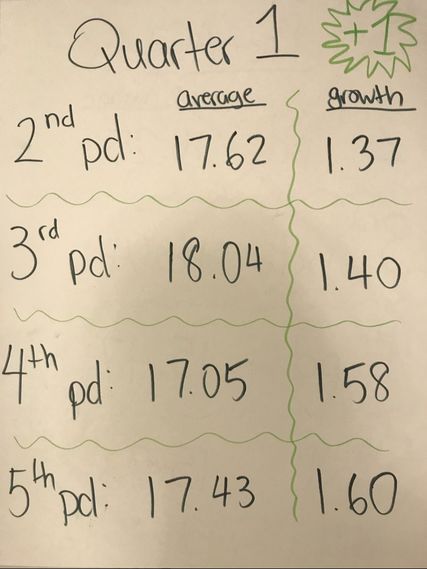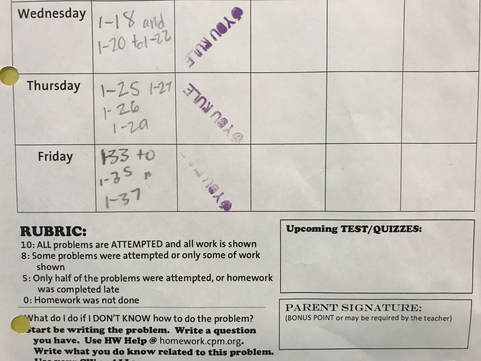Student Engagement
STUDENT ENGAGEMENT OVERVIEW
Student engagement is key to student retention and mastery. In order to encourage more student engagement, I celebrate and track student growth on formative and summative assessments. At the beginning of the year, my students and I brainstorm and propose a classroom mission statement. Core to our mission is to have a "welcoming, joyful, and productive space" where we "celebrate every student and family". Therefore, all forms of student growth on assessments are celebrated.
Students receive recognition for achievement, thorough process, consistency, completion, and other aspects important to assessment growth. In addition, I share student growth with their families by regularly making positive phone calls. With parental permission, I also send parents pictures and videos of their children demonstrating grit, leadership, or kindness in my classroom. Students enjoy the celebration and tracking because it reinforces that the hard work they put into learning Algebra II has visible rewards.
Please scroll down or click the table of contents below to learn more about how I engage students through celebration and trackers.
TABLE OF CONTENTS
Student Celebration
Student Trackers
Student engagement is key to student retention and mastery. In order to encourage more student engagement, I celebrate and track student growth on formative and summative assessments. At the beginning of the year, my students and I brainstorm and propose a classroom mission statement. Core to our mission is to have a "welcoming, joyful, and productive space" where we "celebrate every student and family". Therefore, all forms of student growth on assessments are celebrated.
Students receive recognition for achievement, thorough process, consistency, completion, and other aspects important to assessment growth. In addition, I share student growth with their families by regularly making positive phone calls. With parental permission, I also send parents pictures and videos of their children demonstrating grit, leadership, or kindness in my classroom. Students enjoy the celebration and tracking because it reinforces that the hard work they put into learning Algebra II has visible rewards.
Please scroll down or click the table of contents below to learn more about how I engage students through celebration and trackers.
TABLE OF CONTENTS
Student Celebration
Student Trackers





